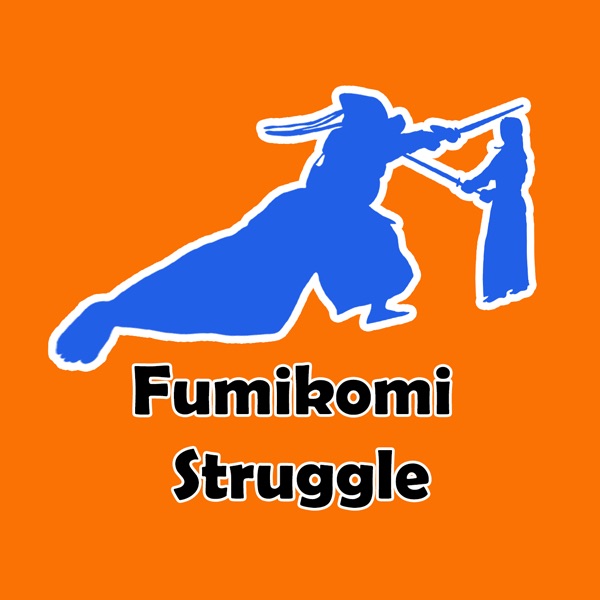You Got It!
Don’t Be Obsessed with Fumikomi

I have been telling my students that fumikomi is not necessary. And recently I have read an article by Geoff Salmon sensei, the author of Kendo. It is called Fumikomi-ashi – not the only way. You should read this if you have not.
And many people think that ki ken tai icchi is about striking a target and with the right foot stomp at the same time along with kiai.
I do not disagree with it but I think ki ken tai icchi has more to it. And many kendoists know about it but not through being taught; through experience.
As it is written, tai means body. Not only the right foot. So I see this as a warning; “Do not execute a strike only with your arms".
No “Hit and Away” in Kendo
You can “hit” a target with your arms extended and keep your body away from your opponent. This is not what we learn in kendo.
We learn sutemi or commitment. We must commit ourselves into our cut without thinking about “escaping/running away“.
The Difference from the Basics
Kendo basic movements seen in suburi such as joge buri and so forth, we do not do fumikomi. We slide forward and as the back foot, usually the left foot, comes forward, we strike.
But when we put a set of armor on, this changes.
As the right foot lands your shinai hits a target.
Hmmm…
What do you think?
Two Different Things But Based on The Same Purpose
Since it is said that kendo is “oshi-giri (push to cut)“, we must deliver our body forward. That is why the back foot should follow the front foot. Let’s remember this and have it as the core of this argument.
Our body starts shifting forward and finally the front foot takes off in the air. We can say that it is a shift from the stable status to unbalanced status.
When we cut our opponent, we want to be in
- balance and
- stable
as much as possible.
And most importantly we want to maximize the
- power and
- effectiveness
of our techniques.
This video (Japanese Only) shows that the strike with the right foot and striking at the same time is more powerful than a strike with off-timing.
The difference is with or without fumikomi.
So the footwork is different in strikes with and without fumikomi is probably that is to strike our opponent most powerfully and effectively keeping the balance of the body with the oshi-giri.
On the other hand, with a real sword, it is used “hiki-giri (pull to cut)” so it does not make sense if the left foot comes forward like kendo unless they are applying a technique of oshi-giri.
Ki Ken Tai Icchi = Energy, Sword and Body Must Become One
This is only an interpretation to make sense out of what I have seen since I started kendo. I have seen many techniques in kendo so there are many types of ki ken tai icchi.
If you execute kote suriage kote (seen in Kata No.6) in kendo, which way do you go, forward or backward after you execute kote suriage kote?
It always depends on how close your opponent gets to you but quite likely you would stay where executed kote suriage kote or you would go backward as a result of trying to get a proper distance to strike.
Of course you can use a fumikomi here but it is not necessary. You can strike as you do in Kata No.6. And to maximize the power you sink your body a little bit. Only a little bit like using iai-goshi (bend your knees slightly to lower and stabilize your body with zanshin).
You take a step forward onto the right or left foot to execute a cut. Sometimes you don’t even take a step forward as you can see in some iaido.
So the point is that all the three elements should be executed as one to maximize the power of the weapon you are using. Thus, your cut will be as effective as it could be.
Fumikomi (Stomping) Is Not a Goal But A Result
We strike men from issoku itto no ma (or a bit closer) that is probably a distance that we cannot reach without jumping in.
So we kick the floor with the back foot to give us a little push to reach our target.
That is ALL.
Many think that the stomping is important but not really. If you can execute the powerful cut without fumikomi by putting all the three elements (Ki Ken Tai) together followed by zanshin, then you are good.
So it does not matter if you strike with the right foot forward or the left foot forward (in my opinion) as long as you are executing a technique and its power is maximized by ki, ken tai.
This is what I think at the moment. This is subject to change :)
Fumikomi Related Posts
- Fumikomi Practice in Different Perspectives
- Fumikomi Mechanism
- How to Practice Fumikomi
- Closer Look on Fumikomi
- Fumikomi, Zanshin, Tenouchi
- Why Fumikomi-Ashi in Kendo?
- Increase Fumikomi Power
- Fumikomi=Stomping?
- Proper Fumikomi
- Fumikomi Posture

